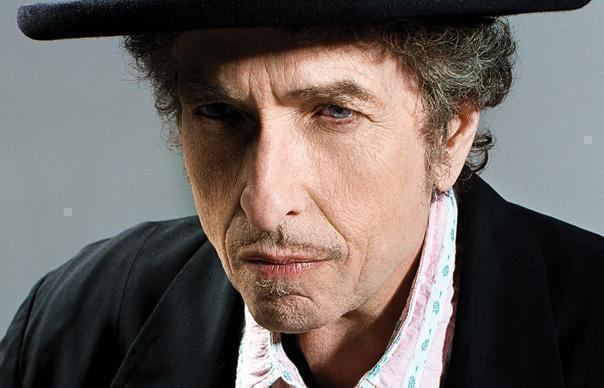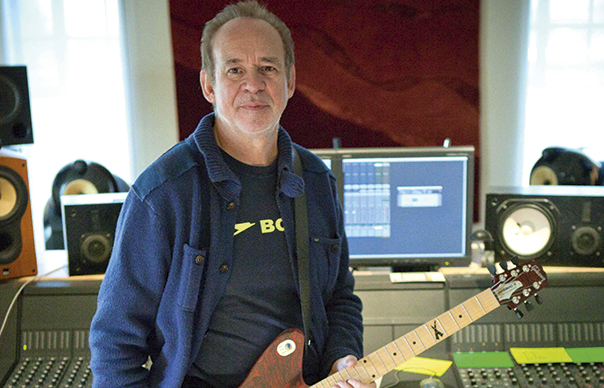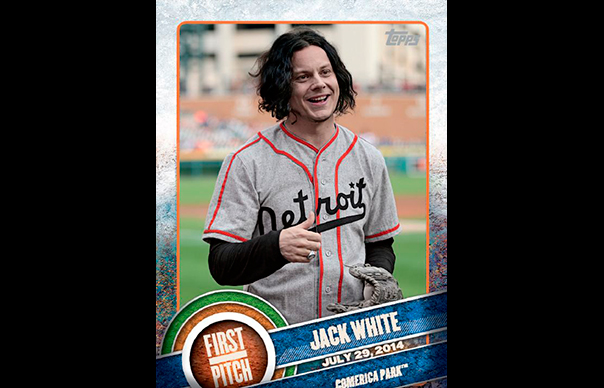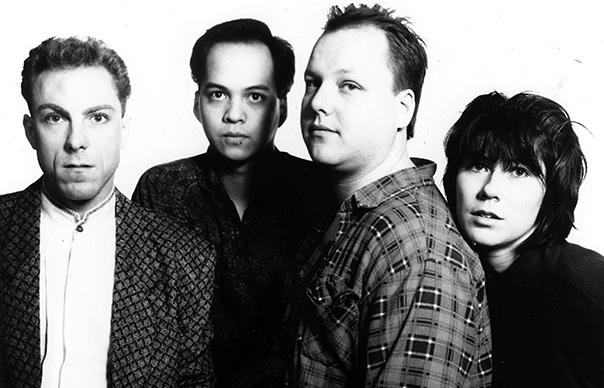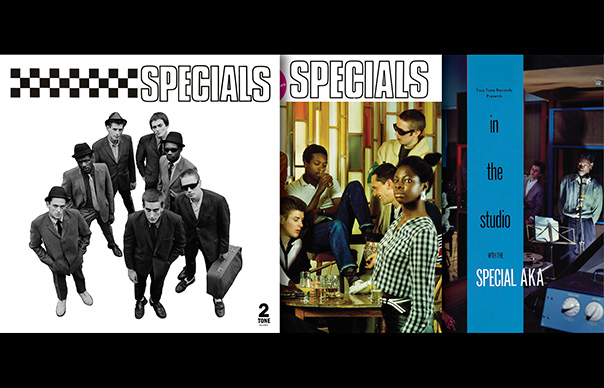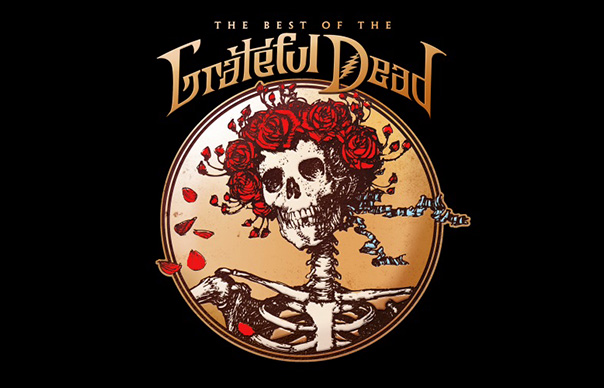In our January 2013 issue (Take 188), we met Ty Segall, the garage rock wunderkind wreaking fuzz-addled havoc with the canon. For a few years now, he’s sat at the heart of a thrilling new California psych scene, and regularly features in Uncut’s albums of the year list – once with three entries! How did he become unstoppable, and whatever will he do next?… “Man, I really need to surf more. I’ve been too busy.” Words: Louis Pattison
_________________
“Guitar solos were not cool when I was 17. Classic rock: not cool. At high school, there was always this weird tribal thing – like, you’re wearing a Stooges T-shirt so you’re not allowed to put a Led Zeppelin record on. But for me, I was always like, is it good? For me, that’s it.”
Meet Ty Segall – Californian, 25 years old, baby-faced handsome, with dirty-blond locks that give him the air of a cherub that slipped off a cloud and somehow landed in a rock band. But don’t be fooled by his laconic exterior: few artists in 2012 have left their mark quite like Segall.
This year, he’s released three full-length albums. First, back in April, there was Hair, a gorgeous psych record made with Tim Presley of fellow Cali rockers White Fence. Then there was July’s Slaughterhouse, 11 tracks of distortion-wracked space-rock credited to the Ty Segall Band (on two slabs of 10-inch vinyl). And finally, released in October, Twins – a blend of sun-baked Californian songwriting and cranked-up fuzz that might just be his best yet. Each exceptional, each very different. “A general rule for recording,” says Segall, “is that I’ll hopefully never make the same album twice.”
Given his astonishing work rate, that itself is quite a task. In the 10 years he’s been making music, Segall’s chalked up eight solo albums and crashed through the ranks of almost as many bands – a luridly named bunch like The Traditional Fools, Epsilons, Party Fowl and The Perverts – all the while chasing his own singular vision of garage-rock nirvana. “My favourite thing is a pop song that has a surprising element of noise to it,” he says. “That’s what’s cool to me.”
“We came up in the ’90s with grunge, and as we got older, we got more into the garage of the ’60s,” says Cole Alexander of Black Lips. “Ty is one of the only guys to legitimately bridge the gap between these two genres and generations. Coming from my age perspective, it feels like something you and your grandparents can rock out to that your parents might not get.”
Take a plunge into Ty Segall’s back catalogue and you hear a tension that, to this day, remains unresolved. On one hand, a deep respect for the rock canon; on the other, an urge to slather songs in distortion and shake them to breaking point. It’s rock’n’roll treated not like a museum, but like a playpen. “If you play rock, you shouldn’t fight influence,” Segall says. “It’s impossible these days not to have these things show on your sleeve… so why not make the drums try to sound like a Kinks record, if that’s what you like?”
“Ty really wears his references on his shoulder,” says Jennifer Herrema, formerly of Royal Trux, now fronting hard rockers Black Bananas. “But more and more, bands can reference really literally, because people don’t know this music any more. And he just does a masterful job of putting things together. Take his song ‘The Hill’ – from the get go it sounds like Fairport, then goes into ‘Good Day Sunshine’ by The Beatles, and straight into ‘SF Sorrow Is Born’ by The Pretty Things. It’s a musical history trip – and he’s always changing up what he does. He’s not staying stuck, he’s definitely keeping himself excited.”
_________________
Segall was born in 1987 in Laguna Beach, down the coast from LA. He was seven when Kurt Cobain died. He still remembers playing “Smells Like Teen Spirit” on his first boombox. He started playing drums at the age of 13, got his first guitar at 15 and that same year formed his first group, The Love This, and reached out to a kid at his high school he knew could play sax. “I was stoked, as I’d seen them play before and they were great,” says Mikal Cronin, today Segall’s sideman in the Ty Segall Band. “So I guess that’s when we started hanging out.”
The pair were natural collaborators. “Ty approaches music making intuitively and at a rapid pace, though at the same time works hard and carefully to make sure it’s exactly how he wants it,” confirms Cronin. “We have different influences, goals and ideas about what we want to accomplish musically – these days it seems I’m into pop while he’s into ‘making it fucking loud’. But there’s a solid foundation that we share.”
After The Love This split, Segall and Cronin formed Epsilons, an outfit more reflective of where their taste was heading: “We were into garage rock, ’77 punk, MC5, The Sonics. Horrible lyrics – very high school – but it was fun.”
In the ’60s, Laguna Beach was a counterculture hotspot, the place of Timothy Leary’s 1968 arrest for marijuana possession and home to the Brotherhood Of Eternal Love – a commune of LSD evangelists who spoke of “psychedelic revolution” and sold acid through local healthfood stores and juice bars. By the ’80s, only a few remained. “I remember being really young, and seeing all these weird characters around, old acid heads, art people,” says Segall. “But then the money came.”
The gentrification accelerated in 2004 with the broadcast of MTV’s Laguna Beach, an early example of “constructed reality” TV which followed the lives of some of the city’s most entitled teens. “There was a girl whose dad invented the frozen burrito who persuaded her dad to move to Laguna Beach just so she could appear on TV,” remembers Segall. “Fucking frozen burritos, man.”
Luckily, he had a ticket out of town, enrolling on a media course in ’Frisco. Education wasn’t for him. “Honestly, I wanted to learn recording engineering, and I neglected to do my research ’cos I wanted to get to San Francisco so badly.”
Arriving in San Francisco, Segall discovered the city was in the throes of its very own rock renaissance, groups like Sic Alps, Thee Oh Sees and White Fence playing music that, for all its rough-house manner and liberal application of distortion, still sounded distinctly, psychedelically Californian.
“We speak a similar language musically,” explains White Fence’s Tim Presley of the current San Francisco sensibility. “We don’t breathe the same air as New York, or London, that’s a whole other story. We honour these links between Buck Owens to Quicksilver Messenger Service to Moby Grape to Love to the Germs to Thee Oh Sees and then right back to Kim Fowley. It’s the music we harvest here at home. We’re just carrying the torch.”
Ty fell in with The Traditional Fools, a surf-punk band inspired by Billy Childish, Red Kross, and “all that surf-punk and skateboarding music that came out of Orange Country in the ’70s and ’80s.” While playing with the Fools he met Thee Oh Sees frontman John Dwyer, a fulcrum of the San Fran scene. Ty passed him a demo CD of his solo recordings. “He asked me to play a show, then go on tour, then he was, like, let me put out your record.” In 2008, Dwyer released Ty’s self-titled debut on his label, Castle Face.
For Segall, this was a small revelation. Recording solo was his making, with LPs like 2009’s Lemons and 2010’s Melted giving him the space to extend his songwriting muscles. But the LP where things really started happening was 2011’s Goodbye Bread. “It was the first record where I had an idea of what I wanted to do, a strong approach,” Segall confirms. “Melted is rad – a total party record. But Goodbye Bread was the one where I was like, I can stand by this for a long time.”
Recorded meticulously over five months in his friend Eric Bauer’s basement, Goodbye Bread is perhaps Segall’s most Californian record – albeit one with a cynical heart, songs like “I Can’t Feel It” and “California Commercial” a sour retort to Governor Schwarzenegger’s attempt to market the state as some kind of leisure paradise. In the video to the title track, Ty sits alone at the heart of a party, carnival queens and nude models cavorting around him as he breaths soft riddle-like lyrics: “Who plays the game we all play/Won’t you play me today?/And who sings the song when we’re gone/Won’t you sing along?”
Goodbye Bread was born, explains Segall, out of a period of personal unhappiness: “It was a weird time for me. I had a lot of problems with the Californian lifestyle. Any place of beauty and affluence, you can get a little lost there. It’s a Never Never Land, and people never grow up. Just because there’s beaches and palm trees, it doesn’t mean everything is fine.”
The easy reading of “Goodbye Bread” itself concerns money, or the lack of – the artist accepting his lot of a life of penury. Segall, though, encourages a less specific reading. “It’s what you want it to be. It can mean money, but it’s more of an existential song for me – the point of it all.”
If you saw Ty Segall on tour in the UK this summer, you’ll know such existential ponderings were thin on the ground. Those chaotic shows saw him giving an airing to this year’s Slaughterhouse, the album he recorded with his live band: on bass, Cronin; on guitar, Charlie Moothart, also of past Segall bands Epsilons and The Perverts; and Emily Rose Epstein, who has played drums with Segall since they met at college. Slaughterhouse is the most ripping of Ty’s recent run – a quality he attributes to its collaborative nature. “Our main shared influences are heavy psych, ’77 punk, early ’80s hardcore,” says Segall. “So it ended up a much heavier, faster record. It’s so rewarding to collaborate and come up with something you could never make on your own.”
Slaughterhouse also features a couple of covers – Fred Neil’s “That’s The Bag I’m In”, Bo Diddley’s 1956 classic “Diddy Wah Diddy” – mangled almost beyond recognition. Worth mentioning, because the ill treatment of rock standards is something of a Ty Segall trademark. In London, they encored with a caveman take on AC/DC’s “Dirty Deeds Done Dirt Cheap”. In Manchester, they put the set to rest with a cover of Black Sabbath’s “Paranoid”, played not once, but three times. “That used to be a common occurrence,” adds Segall. “If a show’s going ridiculous, you’ve got to take it to the next level. To own it. It’s fun to cover a song you’re not supposed to. You shouldn’t be allowed to cover Black Sabbath. That’s why you have to do it three times in a row.”
And are you faithful to it? Or do you desecrate it? “Oh, we try to destroy it,” he grins. “As much as we can.”
Ty’s new album Twins, his second for Drag City, began with a fairly simple starting point. “The main idea I had was that I wanted to put fuzz pedal in every song,” says Ty. “I play a Fuzz War, made by a company called Death By Audio – it totally destroys, like a ray gun.”
For all this, Twins is as melodic and nuanced a record that Segall has made so far. Thematically, he says, it’s about “a split personality, and whatever that means to everybody or anybody.”
Certainly, this is a record with many faces. “The Hill”, he explains, began as a mellow folk song, “then I added fuzz pedal, and woah – so much better! But when I transferred it from folk song to rocker, me just singing harmony didn’t do it justice, so I asked Brigid Dawson [of Thee Oh Sees]. She came over, we laid it down in about two hours, and it was just perfect.”
He finds the essence of Twins easiest to explain by way of its cover – a picture of his face, by Annabel Mehran, who also shot the sleeve of Joanna Newsom’s Have One On Me. “We were taking pictures in this club, and found this flexible reflective panel. The image is me shot through this panel as it’s bent – my face exploding out to the side. It was perfect. It just feels like the record.”
_________________
Uncut catches up with Segall again, where he’s at home in San Francisco, loading up the trailer for a three-week US tour co-headlining with Thee Oh Sees. The prospect is both exciting and daunting; ideally, they wouldn’t be touring so hard, but the band have packed in their day jobs and keeping on the road is the only way to make rent. On the bright side, they’re visiting places they’ve never played – a long stretch of the Midwest, then down South, before heading back to Europe. And, says Segall, it’s great to be seeing some of his favourite bands play every night. “I’m such good friends with Thee Oh Sees, but for me they’re just the best live band in the world. Hawkwind, The Stooges, Blue Cheer – they’re in that company.”
When he isn’t on the road or making music, Ty continues, he grabs his board and hits the beach. “Surfing is like a religious experience. So is rock’n’roll, but playing in a band is more like being at a gospel church, everyone freaking out. Surfing is like praying by yourself, just you and the waves.” He shakes his head, sounds a little pained. “Man, I really need to surf more. I’ve been too busy. I miss it a lot.”
So can we expect another three albums in 2013? Segall reckons not. “I have a couple of ideas, but I don’t think I’m gonna have a record out for at least a year. I’m going to concentrate on one thing for as long as I can,” he laughs. “We’ll see what happens.”
Perhaps that long-neglected surfboard will even see some action.


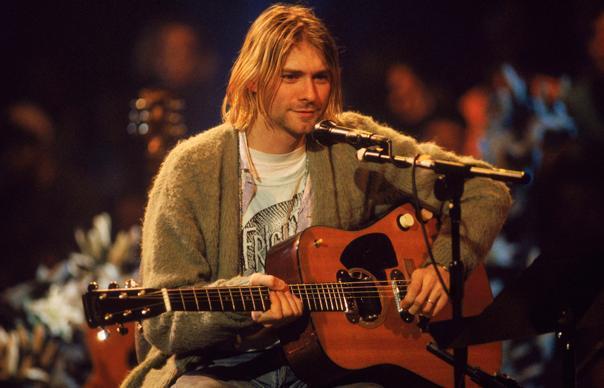
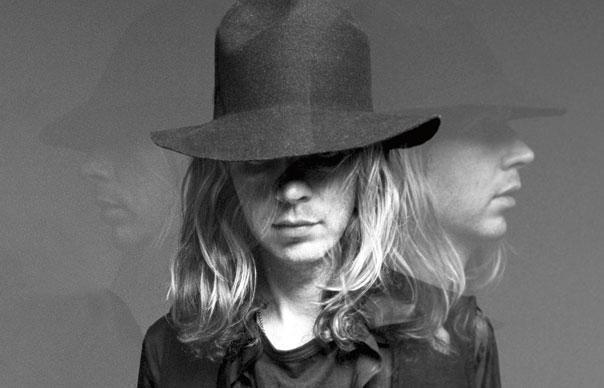
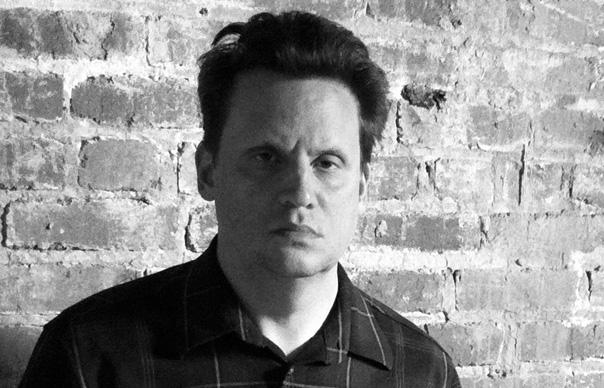
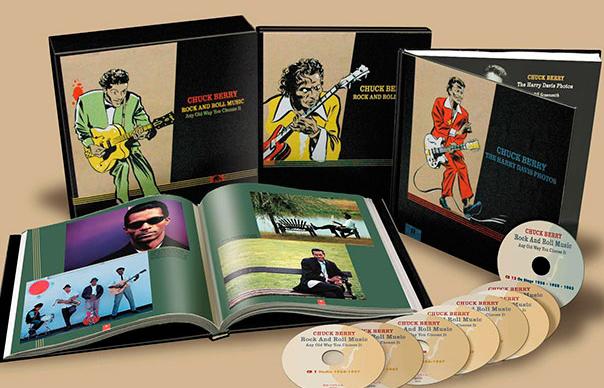
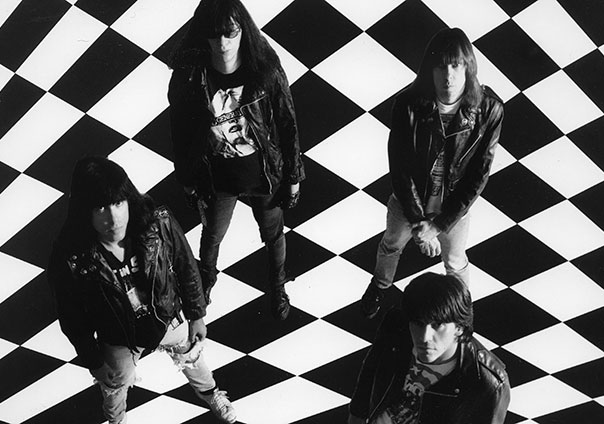
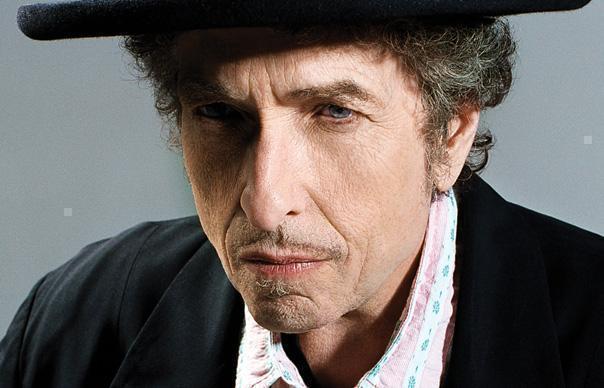
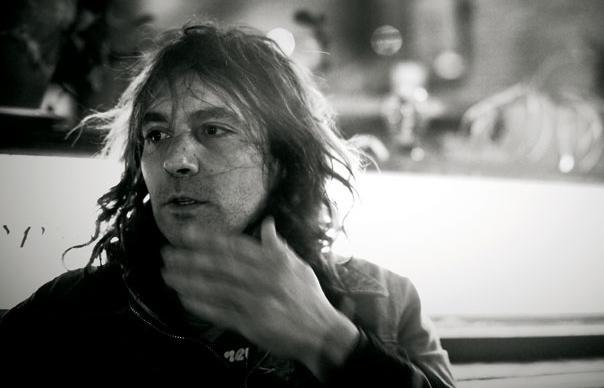
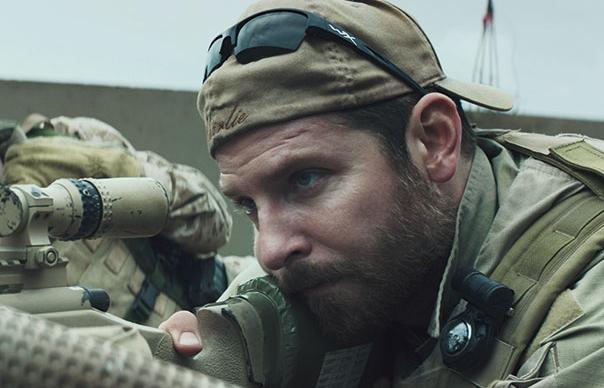
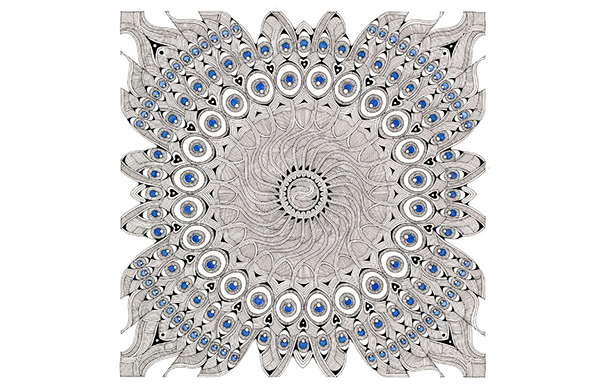
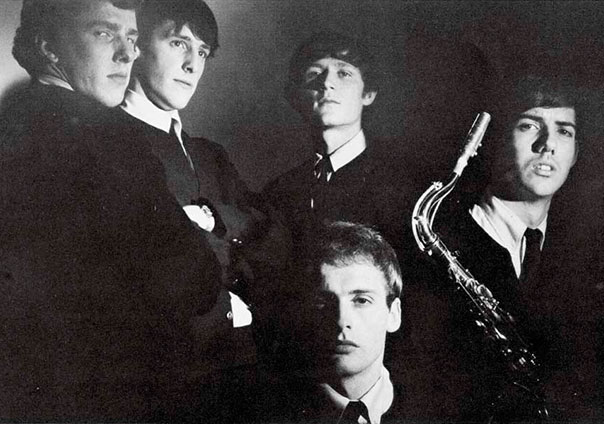
![Aphex Twin reveals new song ‘Diskhat ALL Prepared1mixed [snr2mix]’ – listen Aphex Twin reveals new song ‘Diskhat ALL Prepared1mixed [snr2mix]’ – listen](https://www.uncut.co.uk/wp-content/uploads/2015/02/aphextwin180814w.jpg)
